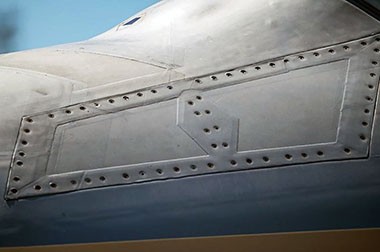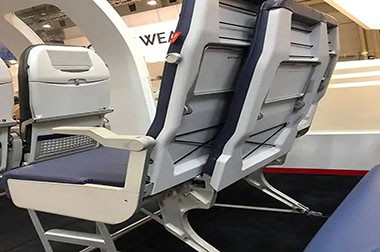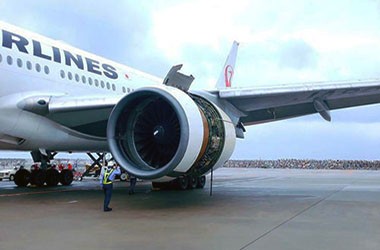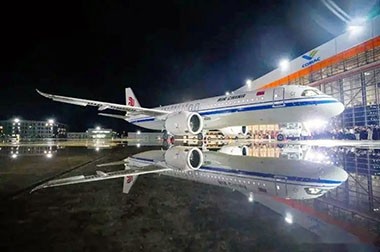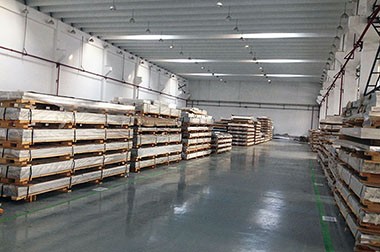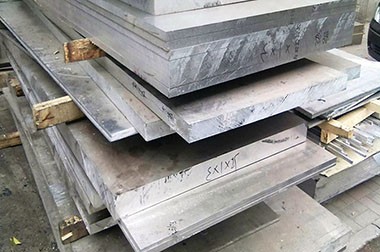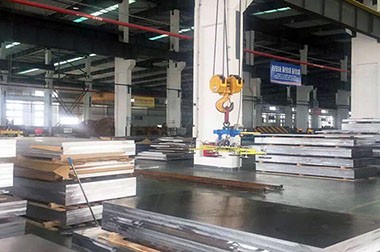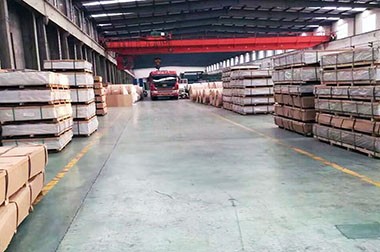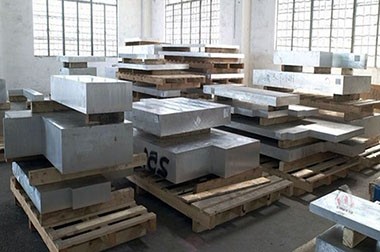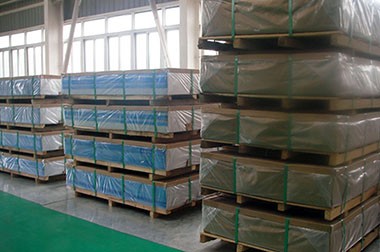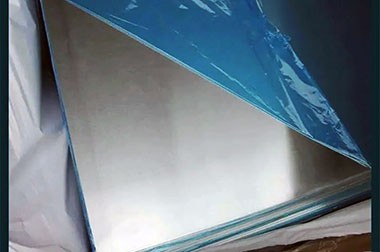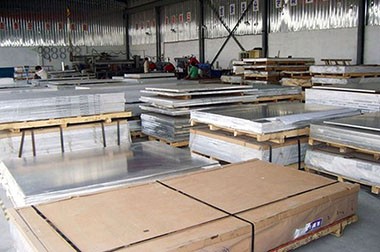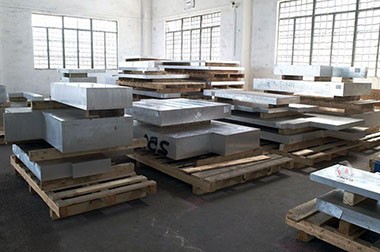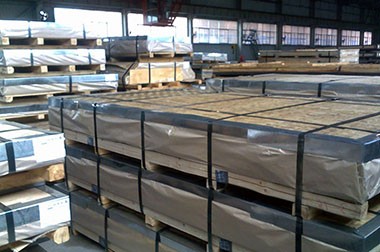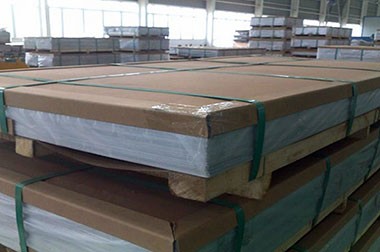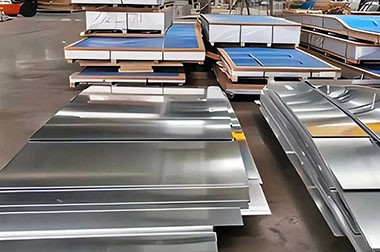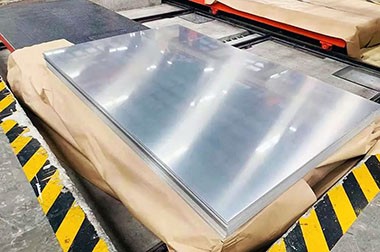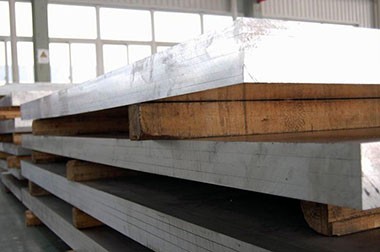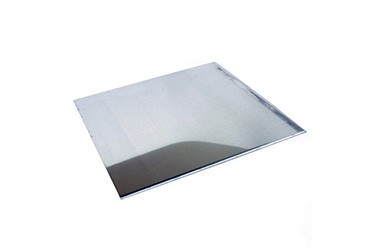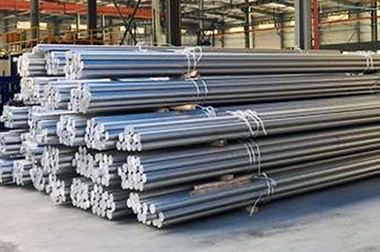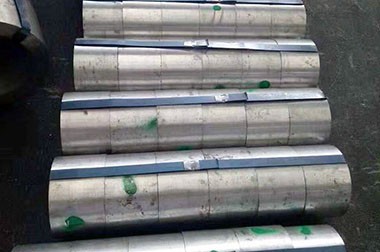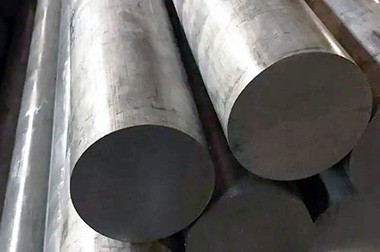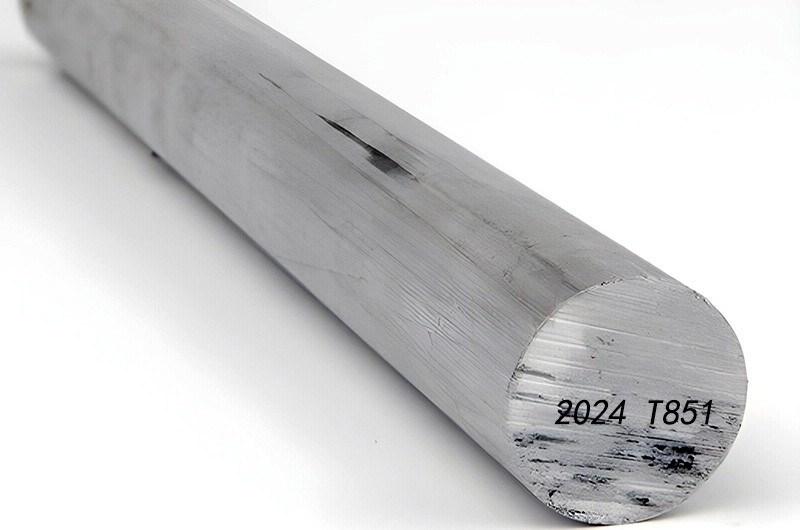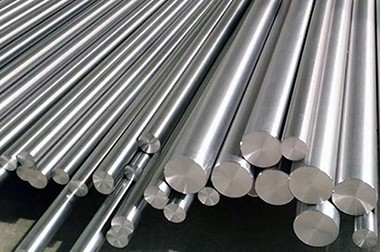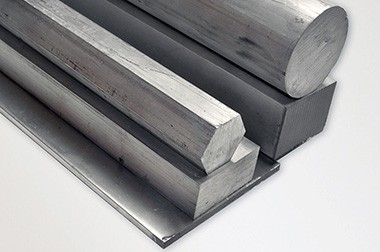2024-o Alclad Aluminum Sheet
2024-O Alclad aluminum alloy sheet is a high-strength aluminum alloy with excellent ductility and corrosion resistance, widely used in the aerospace field, particularly for aircraft structural components and external skins.
2024-O aluminum alloy sheet (Alclad Aluminum Sheet) is a commonly used aluminum alloy material in the aerospace industry. With its high strength and corrosion resistance, it plays an important role in the manufacturing of aircraft structures. Below is a detailed description of this material:
- 2024 aluminum alloy is a high-strength aluminum alloy mainly composed of aluminum, copper, manganese, and magnesium. It has excellent mechanical properties, especially in strength and fatigue resistance.
- The O temper (annealed state) refers to the aluminum alloy being fully annealed during the manufacturing process, meaning it has relatively low hardness, making it easy to process, but its strength is lower compared to the heat-treated states like 2024 T3.

2024-O Alclad Aluminum Sheet Construction
Alclad is a surface treatment technique for aluminum alloys, where a very thin layer of high-purity aluminum (usually 99% or higher purity) is coated on the surface of the alloy aluminum.
This layer of high-purity aluminum significantly improves corrosion resistance, especially in marine environments or other high-humidity environments, making the 2024-O Alclad aluminum alloy more durable in harsh conditions.
2024 O Alclad Aluminum Sheet Standards and Specifications
- AMS 4035:2024-O Alclad Sheet Aerospace Material Specification.
- ASTM B209: Standard for Aluminum Sheet and Plate.
2024-o Alclad Aluminum Sheet Suitability for Forming Operations
2024 O Alclad aluminum sheet is a high-strength, corrosion-resistant material widely used in aerospace and other high-performance applications.
The 2xxx series is known for its excellent strength-to-weight ratio and fatigue resistance.
It is softened by heat treatment, resulting in high ductility and low residual stress, making it ideal for forming operations.
O State (Annealed)
"O" indicates that the sheet has been fully annealed, meaning it has not undergone any artificial aging or further heat treatment.
Compared to heat-treated conditions (such as T3), this state has higher ductility and formability but lower yield strength.
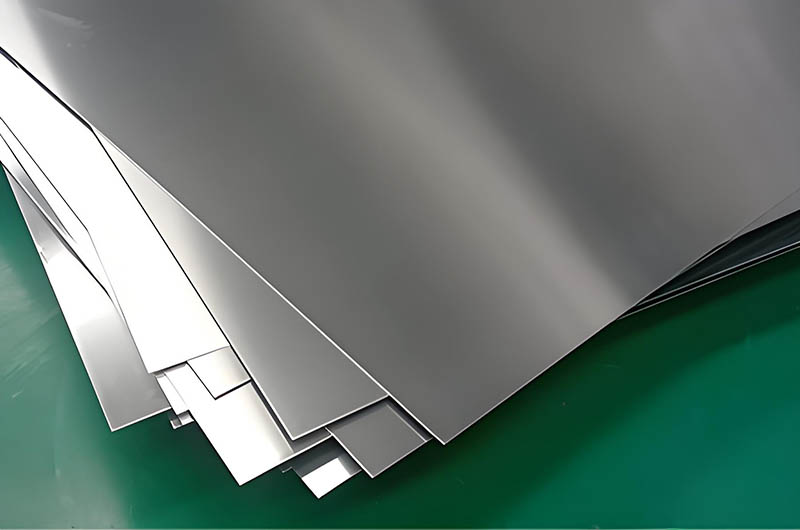
2024-O Alclad Aluminum Sheet Corrosion Resistance
2024 O Alclad aluminum alloy sheet, due to its unique Alclad coating design, exhibits excellent corrosion resistance. The Alclad coating consists of a thin layer of high-purity aluminum covering the surface of the alloy aluminum substrate. This high-purity aluminum layer differs chemically from the base aluminum alloy material and mainly protects the alloy aluminum by reducing oxidation reactions.
Functions of the Alclad Coating
- Corrosion Barrier: The Alclad coating provides a corrosion-resistant barrier, preventing the alloy aluminum substrate from coming into contact with external environments, especially when exposed to air, moisture, salt, and other corrosive elements. This coating effectively blocks corrosive substances (such as chlorides) from attacking the base aluminum alloy, greatly enhancing the material's durability.
- Oxidation Resistance: The high-purity aluminum coating has strong oxidation resistance, effectively preventing the formation of an oxide layer on the surface of the aluminum alloy, thus avoiding oxidative corrosion. Even in high-temperature or humid environments, the Alclad coating maintains its corrosion-resistant properties.
Due to the protection of the Alclad coating, 2024-O Alclad aluminum alloy has enhanced corrosion resistance when exposed to air, seawater, and other environments. The Alclad coating effectively prevents corrosion of the alloy aluminum, especially in high-humidity and high-salt environments, such as external structural components of aircraft, wing skins, etc.
Alclad Coating Process
- A thin layer of high-purity aluminum (typically 5% or less of the total thickness) is metallurgically bonded to the surface of the alloy.
- This cladding serves as a barrier to oxidation elements (such as moisture, salts) while maintaining the mechanical integrity of the base alloy, significantly improving corrosion resistance.
- The shiny pure aluminum appearance not only provides protection but also enhances the aesthetics, especially useful in aircraft skins and structural components.
2024-O Alclad Aluminum Sheet Mechanical Properties
In the O temper, the hardness and strength of 2024 aluminum alloy are lower, making it suitable for subsequent processing, such as forming and welding, but its strength is not as high as heat-treated 2024 alloys.
Generally, 2024-O aluminum alloy has relatively good ductility, making it easy to process by cold working.
2024-o Alclad Aluminum Sheet Advantages
| Advantages | Description |
| Formability | 2024-O Alclad aluminum sheet in the O-temper state has excellent formability, enabling deep drawing, bending, and complex forming operations. This exceptional formability makes it ideal for applications that require precise machining and complex shape formation, particularly in aerospace and high-precision engineering fields. |
| Corrosion Resistance | The Alclad layer (outer aluminum alloy coating) of 2024-O Alclad aluminum sheet significantly enhances the material’s corrosion resistance, particularly in extreme environments. This outer coating effectively protects the inner aluminum alloy from corrosion, extending its service life in harsh environments such as humidity and salt mist, making it suitable for industries like aerospace and maritime. |
| Strength-to-Weight Ratio | 2024-O Alclad aluminum sheet offers a good strength-to-weight ratio, being lightweight yet having moderate strength, making it an ideal choice for weight-sensitive applications. Its lightweight property is especially important in aerospace and transportation, where it reduces the overall structural burden, improves energy efficiency and performance, while maintaining sufficient strength for structural needs. |
2024-O Alclad Aluminum Sheet Applications
| Application Field | Description |
| Aerospace Applications | 2024-O Alclad aluminum alloy sheet is widely used in the aerospace field, particularly in the structural components of aircraft such as fuselage, wings, and skins. Its high strength combined with excellent corrosion resistance makes it particularly suitable for parts exposed to the external environment and requiring long-term resistance to fatigue and corrosion. With the protection of the Alclad coating, 2024-O Alclad aluminum alloy exhibits excellent durability in high-humidity and salt-spray environments, making it one of the key materials in aircraft structures. |
| Structural Components | 2024-O Alclad aluminum alloy sheet is also widely used in the external and internal frame components of aircraft and helicopters. These parts typically require high strength while maintaining a lightweight and high corrosion resistance. Due to the excellent formability and corrosion resistance of 2024-O Alclad aluminum alloy, it not only provides necessary strength but also effectively extends the lifespan of structural components, particularly in high-load and harsh climatic conditions. |
| Other Fields | 2024-O Alclad aluminum alloy sheet is also widely used in other industrial structures and transportation vehicles that require high strength, lightweight, and corrosion resistance. For example, in components that require durability and oxidation resistance, using this aluminum alloy can significantly improve the equipment's lifespan while maintaining a lighter weight, making the overall structure more efficient and durable. |
| Automotive Industry | 2024-O Alclad aluminum alloy sheet is used in the automotive industry to manufacture panels and structural components that are critical for lightweight durability. As the automotive industry increasingly demands weight reduction and fuel efficiency, 2024-O Alclad aluminum alloy has become an ideal choice for manufacturing car bodies and structural components. Its excellent corrosion resistance and durability allow it to withstand various external environmental challenges while maintaining the required strength in a lightweight form. |
| Mechanical Applications | 2024-O Alclad aluminum alloy sheet is widely used in mechanical parts that require high strength-to-weight ratio and corrosion resistance. These parts are typically used in equipment that operates under high stress and fatigue conditions, such as aerospace machinery, precision machinery, and industrial equipment. Its superior corrosion resistance enables 2024-O Alclad aluminum alloy to effectively withstand prolonged wear and environmental corrosion, maintaining the long-term stability and performance of mechanical components. |
| Construction Use | 2024-O Alclad aluminum alloy sheet, due to its excellent corrosion resistance and strength, is commonly used in the construction field, especially for building facades, roofing materials, and other applications that need to endure harsh environmental conditions. Due to its lightweight and durability, 2024-O Alclad aluminum alloy effectively reduces the self-weight of buildings while providing better weather and corrosion resistance, ensuring that the building retains its appearance and structural stability over time. |
2024-O Alclad Aluminum Sheet vs Other Materials
- Advantages: Compared to pure aluminum, it offers a better strength-to-weight ratio and improved corrosion resistance.
- Limitations: Not suitable for high-temperature applications unless the coating is properly applied.
In addition to the 2024-O temper, 2024 aluminum alloy is also available in T3, T4, T6 states, which offer higher strength and are suitable for structures that need to bear larger loads.
2024-o Alclad Aluminum Sheet Limitations
- Lower Strength: The 2024-O Alclad aluminum sheet in the O-temper state has lower strength, which makes it unsuitable for applications that require high strength loads.
- Post-Forming Requirements: Heat treatment (such as aging) may be required to enhance strength and modify the temper.
- Cost: Due to the Alclad cladding process, the cost of 2024-O Alclad aluminum sheet is higher.
2024-o Alclad Aluminum Sheet Manufacturing Considerations
- Processing: Use sharp tools to avoid damaging the cladding; debris may differ from pure aluminum.
- Joining: It is best to use rivets or adhesives for bonding; welding presents challenges due to the composition of 2024.
- Storage: Prevent scratches and moisture to maintain the integrity of the cladding.
2024-O Alclad combines the formability of annealed 2024 aluminum with enhanced corrosion resistance from the pure aluminum cladding. It is widely used in aerospace for components requiring formability and durability, although it sacrifices strength for machinability. Proper treatment ensures its longevity and performance in corrosive environments.
2024-O Alclad aluminum sheet combines the high strength and fatigue resistance of the 2024 alloy with the excellent corrosion protection of the pure aluminum cladding. The annealed (O temper) condition gives it high formability, making it ideal for components that require further processing, while the Alclad layer ensures long service life in harsh environments.
2024-O Alclad aluminum alloy sheet is ideal for aerospace structural components that require certain ductility and good corrosion resistance, particularly for fuselage skins and parts. It has broad prospects for aerospace applications. If higher strength is required, other heat-treated states of 2024 alloy may be more appropriate.
You may also be interested in the following
-
2024 T4 Aircraft Aluminum Sheet Plate for Fuselage Skins
The 2024-T4 aluminum alloy used for the fuselage skin features high strength, good formability, and excellent plate shape and surface quality.
-
7150 7055 2024 Aluminum for Aircraft Wing Panel
7150, 7055, 2024 have high strength, high toughness, corrosion resistance and other properties, suitable for manufacturing wing skin wall panels, wing ribs and webs and other structural parts.
-
7055 2024 Aluminum Plate for Aircraft Seats
7055 and 2024 aluminum alloy profiles are commonly used materials for manufacturing aircraft seats and are widely used due to their excellent performance.
-
2024 Aerospace Aluminum for Engine Cowl Skins
2024 high-strength aluminum is used for engine cowling skins because of its strength-to-weight ratio and high-temperature resistance, providing protection and optimal airflow.
-
2024 7075 Aerospace Aluminum for Door Components
2024 and 7075 high-strength aluminum alloys are used in aircraft door components to ensure durability, deformation resistance, and safety.
-
2024, 7075, and 7475 Aerospace Aluminum for Wing Skins
2024, 7075, and 7475 combinations exhibit excellent strength and fatigue resistance, making them suitable for wing skins to withstand deformation under stress.
-
2024 7075 Aerospace Aluminum for Fuselage Frames
2024, 7075, and 7475 aluminum alloys are essential materials in aerospace engineering, particularly for fuselage frames. Their unique properties enable engineers to select the most appropriate alloy based on specific requirements for strength, weight, corrosion resistance, and fatigue performance.
-
2024 7050 7075 Aerospace Aluminum for Horizontal Tail Fittings
Alloys 2024, 7050, and 7075 provide the necessary strength and stiffness for horizontal tail components of aircraft, ensuring reliable control surface performance.

